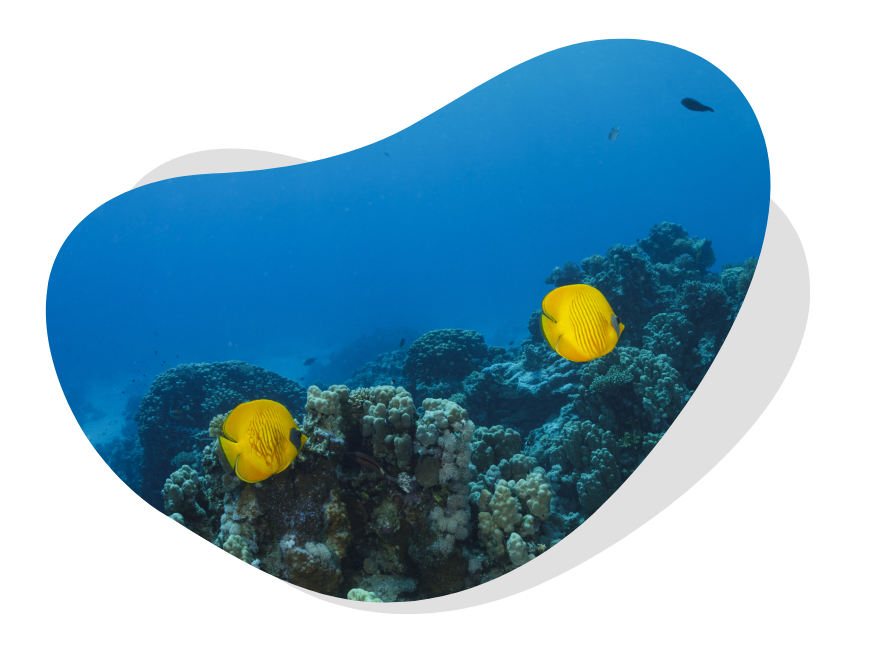




Authors : Eunhyung Lee a, MoonSu Kim a, Do-Hwan Jeong a, Youn-Tae Kim a, Inkyu Shin a, Hyemin Park a, Changyong Lee a, Soo-Hyung Lee b, Hyun-koo Kim a
Author Affiliations
a. Soil and Groundwater Research Division, National Institute of Environmental Research, Incheon 22689, South Korea
b. Environmental Infrastructure Research Department, National Institute of Environmental Research, Incheon 22689, South Korea
ISSN : ****-****
Issue Date : 1 December 2023
Issued By : ScienceDirect
Keyword : 222-Radon, 238-Uranium, Water?rock interaction, Seasonality, Data-driven model
Abstract
Understanding the temporal behaviors of naturally occurring radioactive materials is important for safeguarding groundwater as a secure water resource for drinking, agriculture, and industry usage. This study reports the vertical profiles of 238U concentration and 222Rn activity and the management of in situ monitoring systems during intensive field sampling of a national groundwater-monitoring borehole for seven years (2015?2021). The aim was to capture the seasonal characteristics of the 238U concentrations and 222Rn activity. Both factors were low in the rainy season and high in the winter season, reflecting the dilution effect of rainfall recharge. The 238U and 222Rn behaviors were associated with water?rock interactions of calcite dissolution in fracture zones filled with carbonate minerals. Furthermore, multilayer perceptron models estimated the 238U concentration and 222Rn activity with reasonable regression and classification accuracy. Hydrometeorological indicators (temperature and groundwater-level fluctuations) were more important estimators of 238U concentration and 222Rn activity than geochemical process indicators. The regression accuracy performance was higher at deeper sampling depths, where seasonality in the 238U and 222Rn behaviors dominated. From the predicted distributions of 238U concentrations and 222Rn activities, we could estimate the ranges of 238U concentrations and 222Rn activities emerging from groundwater boreholes. High exposure threats from 238U and 222Rn during groundwater usage were found in the winter season. When the multilayer perceptron models use the entire in situ monitoring data at refined temporal resolution, we can quickly determine the naturally occurring radioactive materials and further develop the national groundwater-monitoring borehole equipped with the in-situ monitoring system, supplementing the occasionally obtained field-measurement data.
Authors : Yoon Soo Park, Tae-Wan Jeon
Author Affiliations
A Environmental Resources Research, National Institute of Environmental Research, Hwangyeong-ro 42, Seo-gu, Incheon 404-708, Republic of Korea
ISSN : 1448-2517
Issue Date : 15 February 2023
Issued By : ScienceDirect
Keyword : Waste policy, Transboundary movement, Basel convention, Hazardous waste, Theoretical approach
Abstract
Despite the efforts made to minimize the illegal trafficking of hazardous waste and prevent environmental pollution worldwide in accordance with the 1989 Basel Convention (BC), the illegal transboundary movement of waste and associated environmental pollution are ongoing. This study proposes a three-stage theoretical approach to effectively managing this waste. In stage one, the Convention, including its 2019 revisions, stipulates six primary requirements: clear declaration, hazardous waste, onsite inspection, responsibility, transport management, and final disposal after import. In stage two, the export and import management system is divided into four facets: customs preprocessing, customs processing, follow-up, and law. The challenges are presented of how to align the waste disposal with the Basel Convention's main requirements. Stage three presents a discussion of the effectiveness of the countermeasures derived in stage two for disposing of waste both within individual nations and internationally. Then, the theoretical approach was applied to analyzing South Korea Ministry of Environment's Act on the Transboundary Movement of Hazardous Waste and Their Disposal (revised in 2017). The strategy was demonstrated to be an improvement, and these study results can be foundational data to newly establish laws or revise existing acts on transboundary movement of waste (TMW) in each country.
Authors : Donghyun Kim a, Yusun Shin a, Eun-Hye Kim a, Youngmee Lee b, Seongmi Kim b, Hyung Sik Kim c, Hwan-Cheol Kim d, Jong-Han Leem d, Ha Ryong Kim e, Ok-Nam Bae a
Author Affiliations
a. College of Pharmacy Institute of Pharmaceutical Science and Technology, Hanyang University, Ansan, South Korea
b. Humidifier Disinfectant Health Center, National Institute of Environmental Research, Incheon, South Korea
c. Division of Toxicology, School of Pharmacy, Sungkyunkwan University, Suwon, South Korea
d. Department of Occupational and Environmental Medicine, Inha University, Incheon, South Korea
e. College of Pharmacy, Daegu Catholic University, Daegu, South Korea
ISSN : ****-****
Issue Date : 4 February 2022
Issued By : ScienceDirect
Keyword : Humidifier disinfectants, Endothelial cells, CMIT/MIT, Oxidative phosphorylation, Mitochondrial dynamics
Abstract
The mixture of 5-chloro-2-methyl-4-isothiazolin-3-one (CMIT, chloromethylisothiazolinone) and 2-methyl-4-isothiazolin-3-one (MIT, methylisothiazolinone) is a commonly used biocide in consumer products. Despite the health issues related to its usage in cosmetics and humidifier disinfectants (HD), understanding its adverse outcome is still limited. Using in vitro cell lines and ex vivo rat models, we examined the effects of CMIT/MIT on the cellular redox homeostasis and energy metabolism in the brain microvascular endothelium, a highly restrictive interface between the bloodstream and brain. In murine bEND.3 and human hCMEC/D3, CMIT/MIT significantly amplified the mitochondrial-derived oxidative stress causing disruption of the mitochondrial membrane potential and oxidative phosphorylation at a sub-lethal concentration (1 μg/mL) or treatment duration (1 h). In addition, CMIT/MIT significantly increased a dynamic imbalance between mitochondrial fission and fusion, and endogenous pathological stressors significantly potentiated the CMIT/MIT-induced endothelial dysfunction. Notably, in the brain endothelium isolated from intravenously CMIT/MIT-administered rats, we observed significant mitochondrial damage and decreased tight junction protein. Taken together, we report that CMIT/MIT significantly impaired mitochondrial function and dynamics resulting in endothelial barrier dysfunction, giving an insight into the role of mitochondrial damage in CMIT/MIT-associated systemic health effects.
Authors : Mi-Kyung Song a b 1, Jung Eun Park c 1, Seung-Hun Ryu d 1, Yong-Wook Baek d, Young-Hee Kim d, Dong Im Kim a, Sung-Hoon Yoon a, Hyunil Shin e, Jongho Jeon c, Kyuhong Lee a b
Author Affiliations
a. Inhalation Toxicology Center for Airborne Risk Factor, Korea Institute of Toxicology, 30 Baehak1-gil, Jeongeup, Jeollabuk-do 56212, Republic of Korea
b. Department of Human and Environmental Toxicology, University of Science & Technology, 217 Gajeong-ro, Yuseong-gu, Daejeon 34113, Republic of Korea
c. Department of Applied Chemistry, College of Engineering, Kyungpook National University, 80 Daehak-ro, Buk-gu, Daegu 41566, Republic of Korea
d. Humidifier Disinfectant Health Center, Environmental Health Research Department, National Institute of Environmental Research, Hwangyong-ro 42, Seo-gu, Incheon 22689, Republic of Korea
e. KRCC Co., Ltd., 20 Neunganmal 2-gil, Seocho-gu, Seoul 06801, Republic of Korea
ISSN : ****-****
Issue Date : 30 August 2022
Issued By : ScienceDirect
Keyword : Chloromethylisothiazolinone, Methylisothiazolinone, Biodistribution, Radiolabeling, Quantitative whole-body autoradiography, Lung injury
Abstract
A variety of isothiazolinone-containing small molecules have been registered and used as chemical additives in many household products. However, their biodistribution and potential harmful effects on human health, especially respiratory effects, were not yet identified in sufficient detail. The purpose of this study was to investigate whether a biocide comprising a mixture of chloromethylisothiazolinone (CMIT) and methylisothiazolinone (MIT) could reach the lungs and induce lung injury when exposure occurs by two administration routes involving the respiratory tract: intratracheal and intranasal instillation. To investigate the biodistribution of CMIT/MIT, we quantified the uptake of 14C-labeled CMIT/MIT in experimental animals for up to seven days after intratracheal and intranasal instillation. In the toxicity study, lung injury was assessed in mice using total inflammatory cell count in bronchoalveolar lavage fluid (BALF) and lung histopathology. The results of the biodistribution study indicated that CMIT/MIT were rapidly distributed throughout the respiratory tract. Using quantitative whole-body autoradiogram analysis, we confirmed that following intranasal exposure, CMIT/MIT reached the lungs via the respiratory tract (nose?trachea?lung). After 5 min post intratracheal and intranasal instillation, the amount of radiotracer ([14C]CMIT/MIT) in the lungs was 2720 ng g?1 and 752 ng g?1 tissue, respectively, and lung damage was observed. A higher amount of the radiotracer resulted in higher toxicity. Both intratracheal and intranasal instillation of CMIT/MIT increased inflammatory cell counts in the BALF and induced injuries in the alveoli. The frequency and the severity scores of injuries caused by intratracheal instillation were approximately-four to five times higher than those induced by intranasal instillation. Therefore, we concluded that CMIT/MIT could reach the lungs following nasal and intratracheal exposure and cause lung injuries, and the extent of injury was dependent on the exposure dose.
Authors : Jaeyoung Kim, Yong-Wook Baek, Cherry Kim, Yoon Jeong Nam, Yu-Seon Lee, Hong Lee, Ja Young Kang, Hyejin Lee, Jin Young Choi, Yoon Hee Park, Su A. Park, Eun-Kee Park, Sang Hoon Jeong & Ju-Han Lee
Author Affiliations
Medical Science Research Center, Ansan Hospital, Korea University College of Medicine, Ansan, Republic of Korea
Jaeyoung Kim, Yoon Jeong Nam, Yu-Seon Lee, Hong Lee, Ja Young Kang, Hyejin Lee, Jin Young Choi, Yoon Hee Park, Su A. Park & Sang Hoon Jeong
Environmental Health Research Department, Humidifier Disinfectant Health Center, National Institute of Environmental Research, Incheon, Republic of Korea
Yong-Wook Baek
Department of Radiology, Ansan Hospital, Korea University College of Medicine, Ansan, Republic of Korea
Cherry Kim
Department of Medical Humanities and Social Medicine, College of Medicine, Kosin University, Busan, Republic of Korea
Eun-Kee Park
Department of Pathology, Ansan Hospital, Korea University College of Medicine, Ansan, Republic of Korea
Ju-Han Lee
ISSN : ****-****
Issue Date : 16 November 2022
Issued By : SPRINGER LINK
Keyword : PHMG-p, CMIT/MIT, PGH, BKC, NaDCC, Metallothionein1, Human pulmonary alveolar epithelial cells
Abstract
Background
We previously reported the increase in expression of metallothionein1 (MT1) B, MT1F, MT1G, and MT1H after exposure to polyhexamethylene guanidine phosphate (PHMG-p), a humidifier disinfectant, in human pulmonary alveolar epithelial cells (HPAEpiCs). However, to date, no study has reported the comparative expression of MT1B, MT1F, MT1G, and MT1H in pulmonary cells upon exposure to humidifier disinfectants such as 5-Chloro-2-methyl-3(2H)-isothiazolone with 2-methyl-3(2H)-isothiazolone (CMIT/MIT), oligo(2-(2-ethoxy)ethoxyethyl guanidine chloride) (PGH), benzalkonium chloride (BKC), and sodium dichloroisocyanurate (NaDCC).
Objective
The present study aimed to evaluate the expression of MT1B, MT1F, MT1G, and MT1H in HPAEpiCs treated with PHMG-p, CMIT/MIT, PGH, BKC, and NaDCC.
Results
Unlike CMIT/MIT, PGH, BKC, and NaDCC, PHMG-p-treated HPAEpiCs showed increased expression of MT1B, MT1F, MT1G, and MT1H. Similarly, exposure to PHMG and PHMG-HCl also induced the expression of MT1B, MT1F, MT1G, and MT1H. Moreover, polyhexamethylene biguanide hydrochloride, a guanidine structure-based chemical, induced the expression of MT1B, MT1F, MT1G, and MT1H. In contrast, polyhexamethylene diisocyanate hydrochloride and guanidine hydrochloride did not induce MT1B, MT1F, MT1G and MT1H.
Conclusion
The upregulation of MT1B, MT1F, MT1G, and MT1H in HPAEpiCs is a PHMG-p-specific response in pulmonary cells, and is not induced by CMIT/MIT, PGH, BKC, and NaDCC exposure.
Authors : Yoon Hee Park, Sang Hoon Jeong, Hyejin Lee, Cherry Kim, Yoon Jeong Nam, Ja Young Kang, Jin Young Choi, Yu-Seon Lee, Su A. Park, Jaeyoung Kim, Eun-Kee Park, Yong-Wook Baek, Hong Lee & Ju-Han Lee
Author Affiliations
Medical Science Research Center, Ansan Hospital, Korea University College of Medicine, Ansan-Si, Gyeonggi, Republic of Korea
Yoon Hee Park, Sang Hoon Jeong, Hyejin Lee, Yoon Jeong Nam, Ja Young Kang, Jin Young Choi, Yu-Seon Lee, Su A. Park, Jaeyoung Kim & Hong Lee
Department of Radiology, Ansan Hospital, Korea University College of Medicine, Ansan-Si, Gyeonggi, Republic of Korea
Cherry Kim
Department of Medical Humanities and Social Medicine, College of Medicine, Kosin University, Busan, Republic of Korea
Eun-Kee Park
Environmental Health Research Department, Humidifier Disinfectant Health Center, National Institute of Environmental Research, Incheon, Republic of Korea
Yong-Wook Baek
Department of Pathology, Ansan Hospital, Korea University College of Medicine, Ansan-Si, Gyeonggi, Republic of Korea
Ju-Han Lee
ISSN : 1738-642*
Issue Date : 15 November 2022
Issued By : SPRINGER LINK
Keyword : Humidifier disinfectant, Polyhexamethylene guanidine phosphate, Human primary bronchial/tracheal epithelial cells, Total RNA sequencing, Lung squamous cell carcinoma-related genes
Abstract
Background
Humidifier disinfectants (HDs), including polyhexamethylene guanidine phosphate (PHMG-p), are commonly used in Korea to prevent microbial growth. Epidemiological studies show that PHMG-p causes severe lung injury, accompanied by pulmonary inflammation and fibrosis. Several studies have examined humidifier disinfectant-associated lung injuries, but few have examined potential carcinogenic activity of PHMG-p. Our previous studies have shown that PHMG-p can induce lung cancer. However, gene expression changes in squamous cell carcinoma (SCC) caused by PHMG-p have not yet been studied.
Objectives
We aimed to determine the PHMG-p-induced changes in transcription levels of genes involved in SCC development and progression in primary bronchial/tracheal epithelial cells (PBTE cells).
Results
Genetic alterations induced by PHMG-p were designated as fold change (FC) values of greater than 2 or less than 0.5. RNA sequencing analysis revealed that two genes were upregulated and sixteen genes were downregulated in the short-term PHMG-p exposure group. Fourteen genes were upregulated and 3 genes were downregulated in the long-term PHMG-p exposure group.
Conclusion
Our data show that PHMG-p induces genetic changes associated with SCC progression in PBTE cells.
Authors : Hwa Jung Sung 1, Sang Hoon Jeong 2, Ja Young Kang 2, Cherry Kim 3, Yoon Jeong Nam 2, Jae Young Kim 2, Jin Young Choi 2, Hye Jin Lee 2, Yu Seon Lee 2, Eun Yeob Kim 2, Yong Wook Baek 4, Hong Lee 2, Ju Han Lee
Author Affiliations
1. Department of Oncology and Hematology, Ansan Hospital, Korea University College of Medicine, Ansan-si 15355, Gyeonggi, Republic of Korea.
2. Medical Science Research Center, Ansan Hospital, Korea University College of Medicine, Ansan-si 15355, Gyeonggi, Republic of Korea.
3. Department of Radiology, Ansan Hospital, Korea University College of Medicine, Ansan-si 15355, Gyeonggi, Republic of Korea.
4. Humidifier Disinfectant Health Center, Environmental Health Research Department, National Institute of Environmental Research, Incheon 22689, Republic of Korea.
5. Department of Pathology, Ansan Hospital, Korea University College of Medicine, Ansan-si 15355, Gyeonggi, Republic of Korea.
ISSN : ****-****
Issue Date : 2022 Nov 16
Issued By : PubMed
Keyword : Ingenuity Pathway Analysis (IPA); bone marrow (BM); hematopoietic toxic effect; polyhexamethylene guanidine phosphate (PHMG-p); respiratory exposure.
Abstract
Polyhexamethylene guanidine phosphate (PHMG-p), the main ingredient of humidifier disinfectants, circulates systemically through the lungs; however, its toxicological assessment has been primarily limited to pulmonary disease. Herein, we investigated the possible abnormalities in hematopoietic function 20 weeks after intratracheal instillation of PHMG-p in a rat model. Notable abnormalities were found out in the peripheral blood cell count and bone marrow (BM) biopsy, while RNA sequencing of BM tissue revealed markedly altered gene expression. Furthermore, signaling involved in hematopoietic dysfunction was predicted by analyzing candidate genes through Ingenuity Pathway Analysis (IPA) program. Respiratory PHMG-p exposure significantly decreased monocyte and platelet (PLT) counts and total protein, while significantly increasing hemoglobin and hematocrit levels in peripheral blood. Histopathological analysis of the BM revealed a reduced number of megakaryocytes, with no significant differences in spleen and liver weight to body weight. Moreover, PHMG-p exposure significantly activated estrogen receptor signaling and RHOA signaling, and inhibited RHOGDI signaling. In IPA analysis, candidate genes were found to be strongly related TO hematological system development
AND FUNCTION AND hematological disease. Accordingly, our results suggest that PHMG-p could affect hematopoiesis, which participates in monocyte differentiation and PLT production, and may induce hematologic diseases via the respiratory tract.
Authors : Myungsup Lee, Sumin Lee, Seam Noh, Kwang-Su Park, Seok Min Yu, Seunghwa Lee, Young-Sun Do, Young Hee Kim, Myunghee Kwon, Hyunjeong Kim & Min-Kyu Park
Author Affiliations
- The purpose of this study was to understand the behavior and origins of OCP pollutants found within the atmosphere of South Korea by
(1) investigating the spatial and seasonal distribution patterns
(2) comparing OCP concentrations with those of other Asian nations, and
(3) exploring the efficacy of various factors for influencing contamination.
ISSN : ****-****
Issue Date : 09 September 2022
Issued By : SPRINGER LINK
Keyword : Organochlorine pesticides, Atmospheric concentration, Spatial distribution, Seasonal variation, Long-range air transport, South Korea
Abstract
Organochlorine pesticides (OCPs) are widely used in certain countries. We determined atmospheric concentrations, distribution patterns, and seasonal variations of OCPs at four sites in South Korea for 1 year. Samples of 22 OCPs were collected using a high-volume air sampler, and measured via the isotope dilution method with HRGC/HRMS. In South Korea, pentachlorobenzene (PeCB), hexachlorocyclohexane (HCB), and endosulfan (EnSF) were dominant, accounting for?>?87% of total OCPs. Spatial distributions showed significant differences and the highest levels were observed in Seosan (295.2 pg·m?3), indicating the compounding potential of diverse sources as Seosan has concentrated large-scale industrial complexes and agricultural activity (Seoul: 243.6 pg·m?3?>?Jeju: 193.5 pg·m?3?>?Baengnyeong: 178.2 pg·m?3). The isomeric ratios of OCPs in the South Korean atmosphere indicated that the dominant sources of HCB and dichlorodiphenyltrichloroethane were primarily used in the past; meanwhile, chlordane (CHL) and EnSFs were derived from recent material inputs. Seasonally, OCP concentrations largely peaked in summer with minimum values in winter. This apparent temperature dependence suggests the re-volatilization of accumulated chemicals into the atmosphere. Additionally, an air mass back trajectory indicated the influence of pollutants released from a reservoir through long-range atmospheric transport in the summer. In particular, restricted OCPs are primarily released into the atmosphere by inadvertent sources, such as industrial activities and volatilization from contaminated areas. Thus, severe OCP pollution in Korea is due to the mobile nature of the particles. These data can be useful for the continuous monitoring of long-range transported air pollutants that are transferred between countries.
Authors : G-H. Lee a †, S-H. Park a †, B-M. Song a, D-M. Kim a, H-J. Han a, J-Y. Park a, Y-W. Jo b, M-Y. Hwang b, K-T. Sim b, S-M. Kang a, D. Tark
Author Affiliations
a. Laboratory for Infectious Disease Prevention, Korea Zoonosis Research Institute, Jeonbuk National University, Iksan, Republic of Korea
b. Division of Chemical Research, National Institute of Environmental Research, Incheon, Republic of Korea
ISSN : ****-****
Issue Date : 10 August 2022
Issued By : ScienceDirect
Keyword : SARS-CoV-2, Disinfectants, Virucidal efficacy, Cytotoxicity
Abstract
Background
Disinfection is one of the most effective ways to block the rapid transmission of severe acute respiratory syndrome coronavirus-2 (SARS-CoV-2). Due to the prolonged coronavirus disease 2019 (COVID-19) pandemic, disinfectants have become crucial to prevent person-to-person transmission and decontaminate hands, clothes, facilities and equipment. However, there is a lack of accurate information on the virucidal activity of commercial disinfectants.
Aim
To evaluate the virucidal efficacy of 72 commercially available disinfectants constituting 16 types of ingredients against SARS-CoV-2
Methods
SARS-CoV-2 was tested with various concentrations of disinfectants at indicated exposure time points as recommended by the manufacturers. The 50% tissue culture infectious dose assay was used to calculate virus titre, and trypan blue staining and CCK-8 were used to assess cell viability after 3?5 days of SARS-CoV-2 infection.
Findings
This study found that disinfectants based on 83% ethanol, 60% propanol/ethanol, 0.00108?0.0011% sodium dichloroisocyanurate and 0.497% potassium peroxymonosulfate inactivated SARS-CoV-2 effectively and safely. Although disinfectants based on 0.05?0.4% benzalkonium chloride (BAC), 0.02?0.07% quaternary ammonium compound (QAC; 1:1), 0.4% BAC/didecyldimethylammonium chloride (DDAC), 0.28% benzethonium chloride concentrate/2-propanol, 0.0205?0.14% DDAC/polyhexamethylene biguanide hydrochloride (PHMB) and 0.5% hydrogen peroxide inactivated SARS-CoV-2 effectively, they exhibited cytotoxicity. Conversely, disinfectants based on 0.04?4% QAC (2:3), 0.00625% BAC/DDAC/PHMB, and 0.0205?0.14% and 0.0173% peracetic acid showed approximately 50% virucidal efficacy with no cytotoxicity. Citric acid (0.4%) did not inactivate SARS-CoV-2.
Authors : So-Yeon Park 1, Ju-Hee Kim 2, Jungkwan Seo 1, and Seung-Hoon Yoo
Author Affiliations
1. Risk Assessment Division, Environmental Health Research Department, National Institute of Environmental Research, Incheon 22689, Korea
2. Department of Future Energy Convergence, College of Creativity and Convergence Studies, Seoul National University of Science & Technology, Seoul 01811, Korea
*. Author to whom correspondence should be addressed.
ISSN : ****-****
Issue Date : 15 April 2022
Issued By : MDPI
Keyword : toluene; hazardous chemical; human health risk; economic benefit; contingent valuation
Abstract
The South Korean government currently designates toluene as a hazardous chemical, only limiting its use in products that are feared to be harmful. Since no measures to prohibit the use of toluene have been implemented, toluene is frequently detected in amounts that exceed the limit. Accordingly, the Government is considering implementing a plan to tighten the current regulations related to the use of toluene to prevent the occurrence of diseases caused by exposure and addiction to it. Therefore, the most important objective of this research is to evaluate quantitatively the economic benefits arising from the implementation of the plan in South Korea. To achieve the purpose of this paper, contingent valuation, an economic technique for analyzing data collected from a survey of people based on economic theory, is applied. For this purpose, a survey of 1000 people nationwide is conducted, and an analysis model that is well received in the literature is adopted. In other words, the annual willingness to pay (WTP) per household to strengthen the regulations to reduce the human health risks of toluene is evaluated to calculate its economic benefits. All the estimated WTP models secure statistical significance. The average WTP per household per annum is derived as KRW 3394 (USD 3.02). Considering that the country contained 20,573,060 households in 2021, the national economic benefits are calculated as KRW 69.82 billion (USD 62.23 million) every year. It is difficult to estimate accurately the costs incurred by tightening the regulations on toluene use, but they do not seem to exceed the benefits. Because tightening the regulations would be socially desirable, the Government would be justified in making this decision.